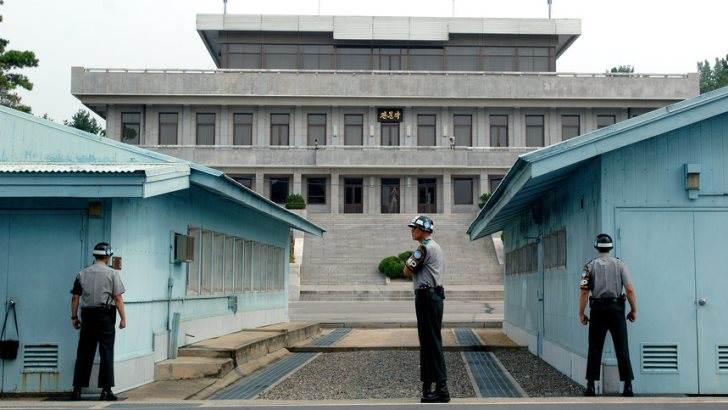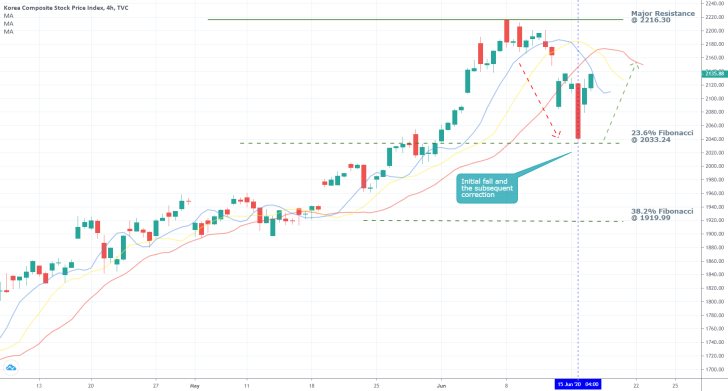
Tensions between South and North Korea have erupted once again today after North Korea's military destroyed a joint office building, which served essentially as an embassy.
The calculated action was supposedly prompted as political retaliation by Kim Jong Un, whose regime was allegedly undermined by South Korean activists and North Korean defectors.
The latter were reportedly sending leaflets during the week prior to the incident, with the intent to sabotage Kim's oppressive regime in the Democratic Republic.
Many political experts were quick to respond to the issue by ensuring that the destruction of the building is a strategic move meant to rebuke Seoul without risking more serious intimidation that could lead to war.
Even still, the episode is likely to erode the fragile inroad that has been made over the last several months in bringing the two countries closer together through democratic means.
Pyongyang recently severed its diplomatic ties with its southern neighbour, which represents another blow to the feeble political landscape in the region. These developments have caused heightened uncertainty that is currently affecting Asian markets.
KOSPI futures – Korea's Composite Stock Price Index – tumbled by nearly 4 per cent during yesterday's trading session, however, the index was able to correct those losses today.
South Korean stocks were even able to close higher amidst the rising political tensions near the DMZ, which is partly due to the general opinion of experts that North Korea is not trying to incite a military conflict with its actions.
As can be seen from the 4H chart below, the KOSPI fell almost to the 23.6 per cent Fibonacci retracement level at 2033.24 before the rebound. The level itself is serving as a prominent turning point, which is why the index is unlikely to fall below it for the time being.
Provided that the political turmoil gets scaled down in the following days, the index is likely to resume trading towards the major resistance level at 2216.30
Nevertheless, the three Moving Averages represent compelling evidence to the contrary. The descending order of the 5-day MA (in blue) trading below the 8-day MA (in yellow), which is trading below the 13-day MA (in red) underlines the increased bearish momentum in the short term.
If the price action consolidates below these three MAs but fails to break out above them, this could provide market bears with more significant indications for a potential change in the underlying sentiment.

Trendsharks Premium
Gold is undergoing a correction, as investors take profits to offset losses from falling stock prices, impacting their margins. However, we anticipate a renewed wave of [...]
The Swiss stock market index is mirroring its global counterparts, such as Germany 40 and US100, experiencing a sharp decline following the announcement of new [...]
We’re analyzing the weekly chart to grasp the broader market trend. Over the past three years, the US30 index has surged by 17,000 points, often resembling a nearly straight [...]
Over the past week, the DAX has experienced a sharp decline, plunging by an astonishing 3,400 points. This downward movement is not isolated, as its international counterparts, such as the UK100 and US100, are also facing significant [...]
EURUSD recently formed a double top at 1.0930, signaling a potential trend reversal, and has since begun a correction. After a 600-pip rally since early March, a pullback at this stage is both expected and healthy. Given these conditions, we are placing a [...]
Since early March, EURJPY has surged nearly 1,000 pips, providing us with several excellent trading opportunities. However, as the rally matures, many early buyers are beginning to take profits, leading to a noticeable slowdown in the uptrend. On Friday, the pair formed a [...]
The AUDJPY currency pair continues to be dominated by bullish momentum, as multiple golden cross patterns reaffirm the strength of the ongoing uptrend. Despite this, we are witnessing a much-needed [...]
The EURAUD currency pair appears to be undergoing a trend reversal, signaling a potential shift in market direction. A notable technical development is the formation of a Death Cross on the chart, a widely recognized bearish indicator that typically suggests a [...]
After securing an impressive 200-pip profit last week, the EURJPY currency pair is now undergoing a southward correction, retracing some of its recent gains. Despite this temporary pullback, the Golden Cross remains intact, reinforcing our view that the overall trend continues to be [...]
The appearance of a Golden Cross in Silver strengthens our analysis that the metal is currently in a strong uptrend, indicating further bullish momentum in the market. This technical pattern, where the short-term moving average crosses above the [...]
This trade presents a considerable level of risk and can be classified as an opportunistic move based on recent price action. The GBPUSD currency pair has experienced a substantial bullish rally, surging by nearly 500 pips in a strong upward movement. However, after this extended period of appreciation, the pair is showing signs of a potential [...]
The anticipated Death Cross on the SMI20 appears to be failing as price finds strong support at the 23% Fibonacci retracement level. After testing this area, the index has shown bullish strength, printing several large green candles, signaling an increase in [...]
A Golden Cross has just appeared on the USDJPY chart, signaling a potential bullish move. This technical pattern occurs when the 20 period moving average crosses above the 60 period moving average, a widely recognized indication of increasing [...]
After 2 months of a down trend, we finally see some indications of price recovery for Oil. The golden cross, a historic buy signal, supports this [...]
For the past month, the German DAX40 has experienced a remarkable 10% surge, reflecting strong bullish momentum. Despite ongoing market volatility and frequent pullbacks, every dip continues to attract fresh buyers, reinforcing the [...]
Oil continues its downward trajectory, despite occasional pullbacks. The overall trend remains bearish, reinforced by multiple Death Cross patterns, a classic sell signal indicating further weakness. Adding to this bearish outlook, the critical [...]
Over the past few days, gold has experienced a sharp decline of more than $100. This downturn can be attributed in part to traders securing profits to manage their margins, which are under strain due to the significant drop in major indices. Currently, gold has fallen below the [...]
The NASDAQ 100 index is showing strong bullish momentum, as evidenced by the formation of a Golden Cross on the chart. This classic buy signal occurs when the short moving average crosses above the long term moving average, suggesting that upward momentum is [...]
The EURAUD currency pair has encountered a significant resistance level, failing to break above the critical 61% Fibonacci retracement level. This suggests that bullish momentum is weakening, reinforcing the case for a potential downward move. Given this technical setup, we favor entering a [...]
The UK100 is experiencing a remarkable rally! Over the past few weeks, the British stock market index has surged nearly 800 points. Each minor dip has attracted more buyers, fueling the bullish momentum. However, since last week, we’ve observed a slight [...]




















